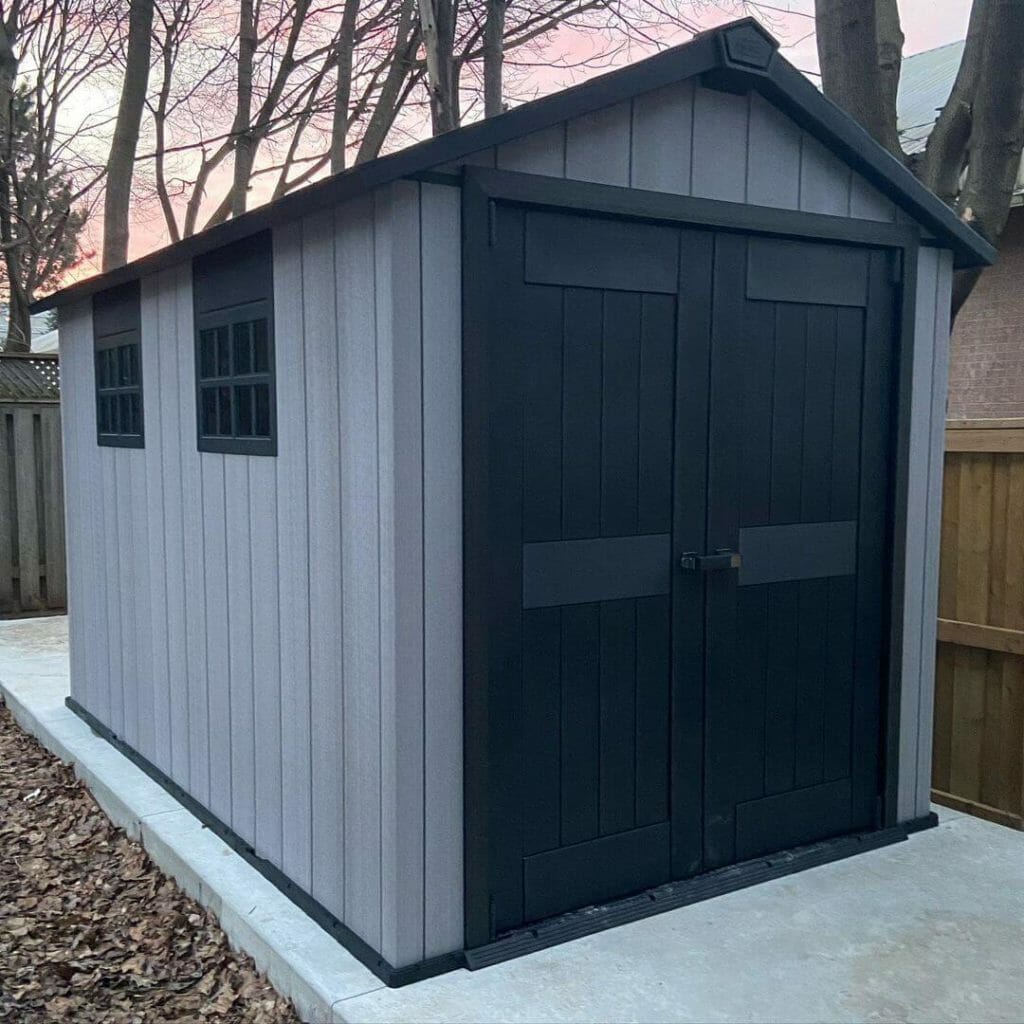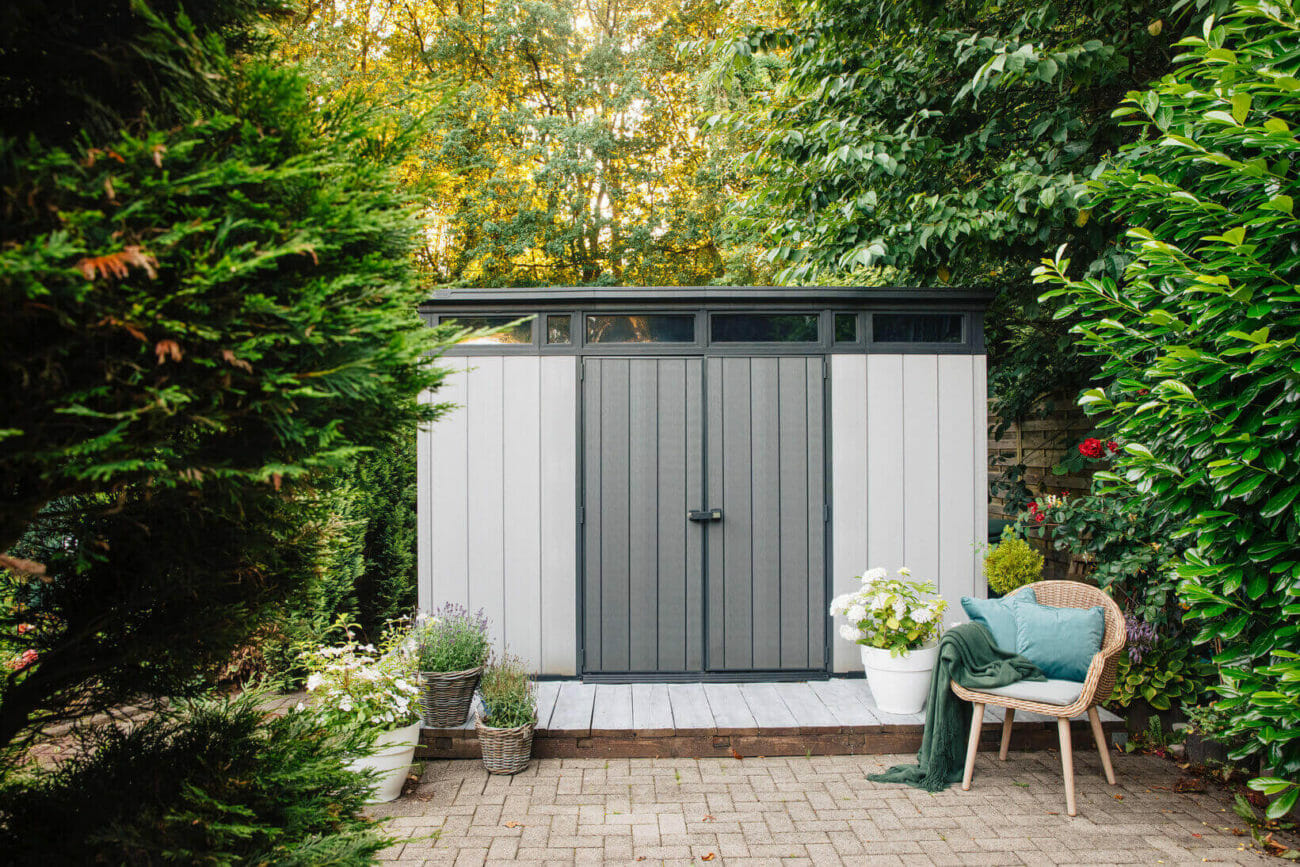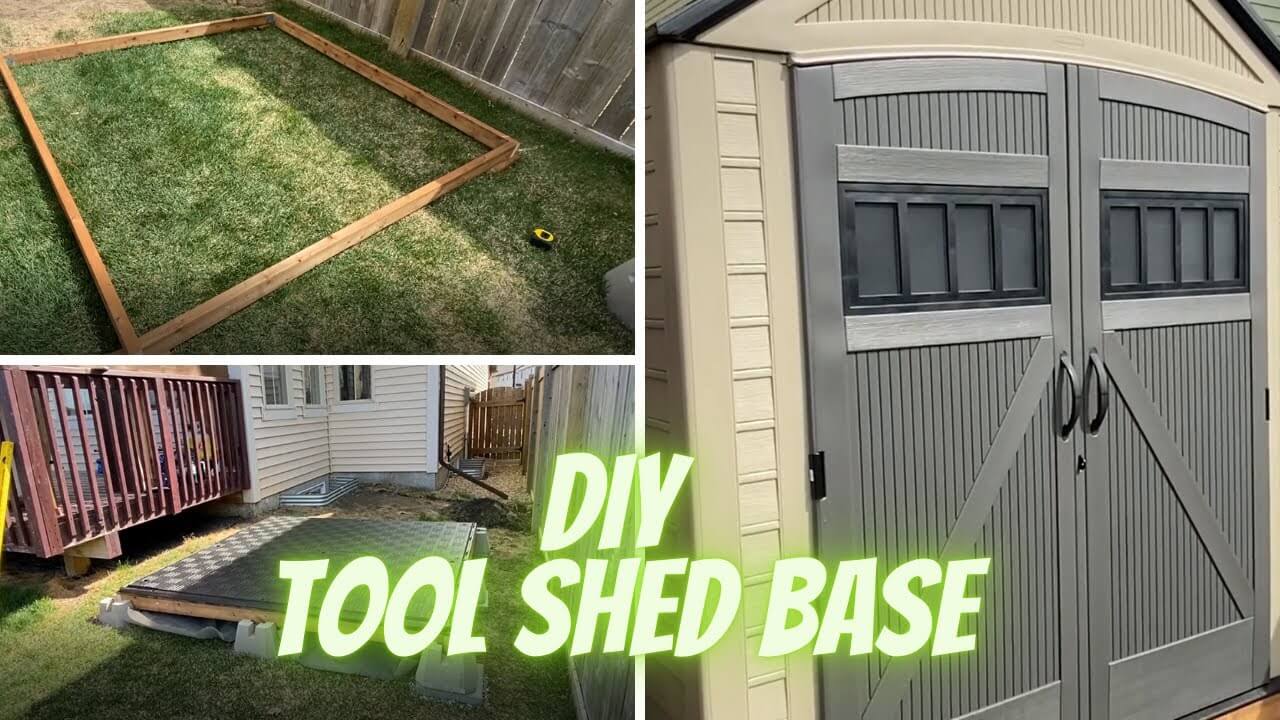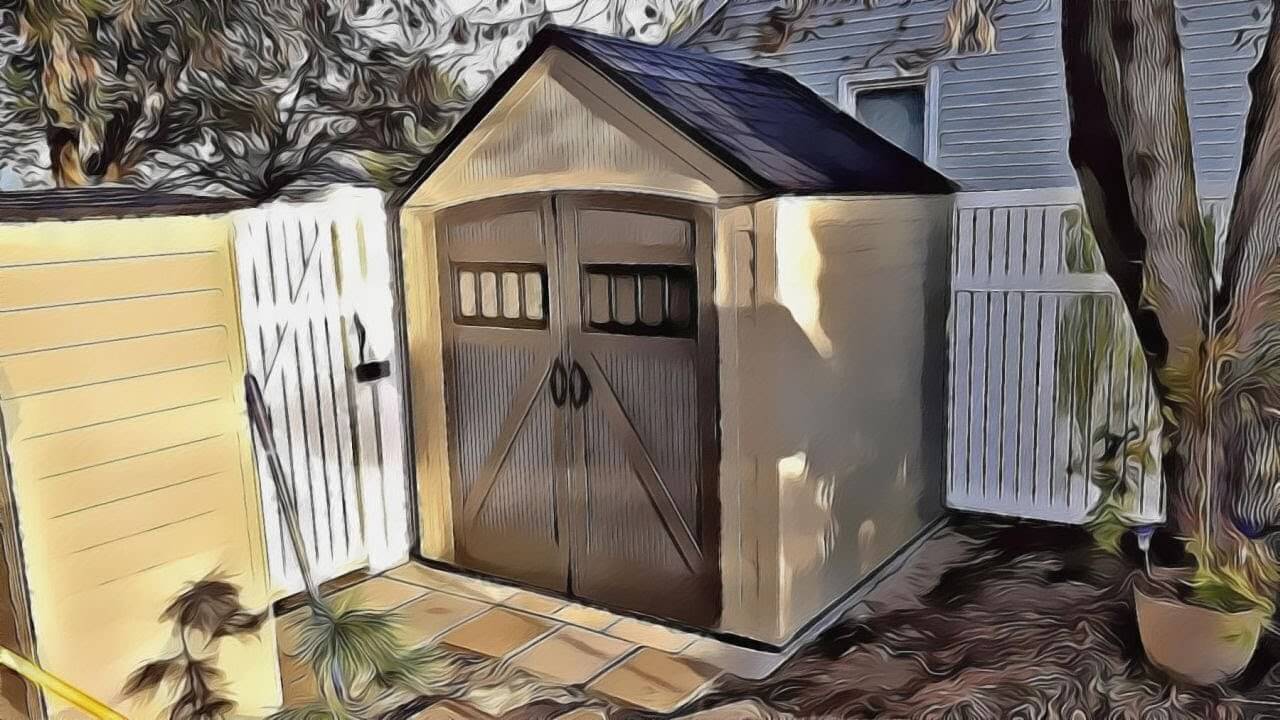Can You Place A Plastic Shed On Grass?
There are a lot of benefits that come along with using a plastic shed. These sheds are affordable, they are easy to assemble and take down, they can be moved easily, they are light, and when they are disassembled, they are simple to transport.
However, where a plastic shed is placed is vital to the longevity of the shed and its contents. This leads many to ask if plastic sheds can actually be placed on grass?
A plastic shed cannot be placed directly on grass. Plastic sheds break easily when the ground shifts beneath them, and they have panel gaps that allow moisture into the shed. Use a plastic shed base filled with gravel or a layer of concrete as a base for the shed to ensure that it lasts well.
The placement of a shed determines how long the shed will last and how well it will protect the items that are stored within the structure of the shed. Where the shed is placed also has an effect on the ground beneath it, so its resting place must be chosen very carefully.
Let’s talk about placing sheds on grass, how to do it well, and what the consequences of this placement may be.
Can You Put A Plastic Shed Directly On Grass?
A shed is a very useful structure, and almost every household could benefit from using one. Sheds provide extra storage space and can be an ideal way to keep bulky items out of your house.
However, not many people consider the ground that sheds are placed on. This, of course, is a vital consideration when installing any shed, but the placement location of plastic sheds is particularly important.
Plastic sheds are very practical, and they have many benefits, but these sheds can also be brittle, easily broken, and very unstable, depending on how well they are built and where they are placed.
This means that the foundation on which a plastic shed stands is critical to the functionality and longevity of the structure. Without placement on the correct foundation, plastic sheds do not function well or last very long at all.
What Should You Put Under a Plastic Shed?
The unfortunate reality is that a plastic shed cannot be placed directly onto grass. If a plastic shed is placed on grass without a base or a base layer of some kind, the shed will be damaged by the placement.
Placing a shed like this onto grass will allow moisture to leach into the shed, which will damage the contents of the shed over time. This is unavoidable, as every shed has some form of a tiny gap between its panels that will allow moisture inside, and placing a shed on grass only compounds the issue.
A plastic shed itself will not be damaged by moisture, but allowing moisture in will severely damage whatever items are stored within the shed. If budget is a concern and you’re looking for a DIY alternative that is both efficient and sustainable, an ecobase shed foundation is a brilliant option.
Why You Shouldn’t Put a Garden Shed on Grass?
Another reason why plastic sheds cannot be placed on grass is that grass shifts over time, and the ground beneath the grass shifts and changes over time as well.
When the ground shifts beneath a plastic shed, gaps form below the shed. When these gaps form, the bottom of the shed is unsupported in those areas, and plastic sheds tend to break where they are unsupported, leaving your belongings exposed to the elements and any small animals seeking shelter from said elements.
The ground beneath a shed will shift and become uneven over time as the grass beneath the shed dies and when rain or moisture makes the ground soft and wash it away.
This is the main reason why a shed cannot be placed on glass without a base or foundation, as the shed will simply crack and break as the ground shifts.
How To Place A Shed On Grass – The Right Way
If it is not suitable to place a plastic shed directly onto a grassy patch of ground, but you want to put your shed in this type of area anyway, are there any ways to make a grassy area suitable for placing a plastic shed?
Fortunately, there are several ways to place a plastic shed on grass safely that will ensure that the shed lasts for as long as possible and protects the contents within as well as possible.
Placing a plastic shed directly onto grass is never ideal, but if you have no other options, there are ways to make it possible and even ways to ensure that your plastic shed will last as long as it should, regardless of the grass that it is placed on.
Let’s explore the various options for placing a plastic shed on glass safely and how to execute them well.

Use A Shed Base
The simplest, most straightforward, and most economical way to put a place shed on grass safely is to use a shed base. A plastic shed base can be purchased from any garden or home improvement store, and these units are designed to form a stable foundation for a shed placed on grass.
This type of shed base is made from plastic and is comprised of several small, square compartments. These basses are flexible so that when the ground shifts beneath them, they shift with the ground and fill the gap above.
These bases are filled with gravel to make them stable and to support the shed well.
A garden shed base like this will keep a plastic shed up off the ground and away from any potential issues caused by being placed directly on grass.
Use A Layer Of Cement
Another cost-effective way to ensure that your plastic shed lasts as long as it should and protects your items well is to pour a simple layer of concrete as a shed base.
Simply dig a shallow hole with the same dimensions as the base of the shed that removes the grass and levels the ground, and pour in a layer of concrete down to provide a flat, stable, sturdy surface for the shed to be placed on.
Plastic sheds are designed to be kept on hard, flat surfaces, so this solution is the ideal way to place your shed wherever you want it to be, as it will insulate and support the shed well.
Use A Layer Of Paving Stones
If concrete is too permanent, then using a layer of paving slabs placed directly beneath the shed is another option. The paving stones can be easily removed when the time comes, but they will still form a stable base for the shed.
The only trouble with this option is that paving stoves can shift easily if they are not well seated, and the gaps between the stones can create channels that may open the door to shed damage.
So long as the paving stones are seated well, they will last well, and they will form a good base for the shed even if the ground shifts beneath it.
In Conclusion
Plastic sheds are not designed to be placed directly onto grass, and putting a plastic shed on grass without a base or a base layer will ultimately ruin the shed and all of its contents.
If you want to use a plastic shed, a shed kit or build from scratch, be sure to provide a stable study base for it to rest upon.
The most important part of all structures is the foundation. This is true for all structures, including sheds!
If you provide a stable foundation for your shed, it will last for a very long time. If not, the shed will deteriorate or break very quickly, regardless of what is stored within it.



